Types of wine everyone should know
My only regret in life is that I did not drink more wine. But it is not about the amount of wine one should drink, but rather about the different types of wine one should know.
Ernest Hemingway
Wine can be very intimidating with its many characteristics and varieties, but this should not be a reason to stop exploring different wine types around the world and become a knowledgeable wine drinker.
To make sure you don’t feel completely lost on your next date or dinner party, we’ve put together a short guide to types of wine that will definitely reinforce your knowledge without having to be a sommelier.
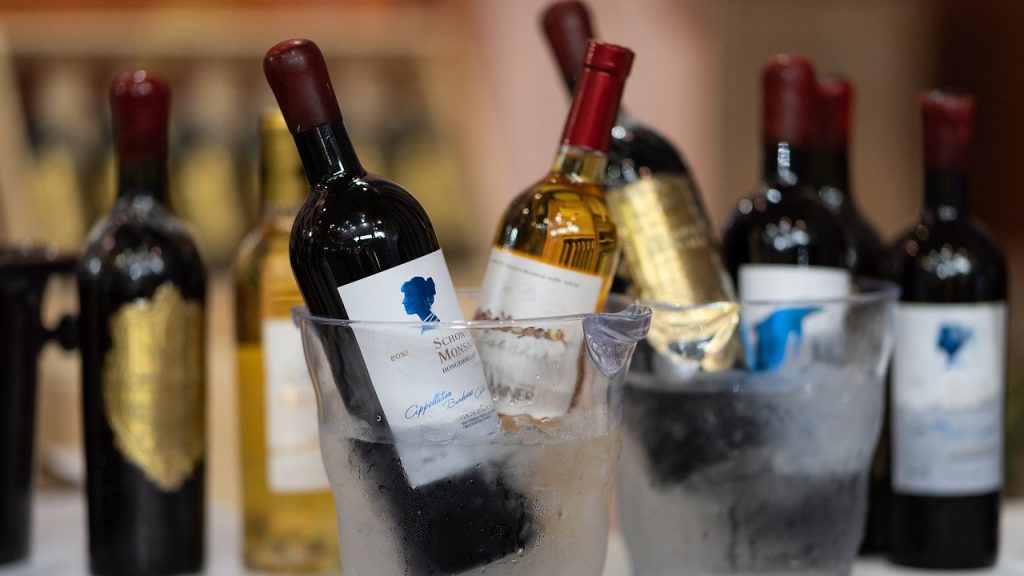
What are the most common types of wine
There are many types of wine. You have varietal wine like Sauvignon blanc which is made from a single type of wine grape and some are blends of different types of grape, like Rioja. Below we will introduce you to some of the more well-known wine types.
Red wines
Red wine is defined by the color and the art of production. The color comes from the dark skin of a red grape or a black grape. Grape juice on its own is clear, and the pigment is released into the juice when the red grapes or black grapes are crushed. When wine ferments together with the grape skins tannins are released that give the wine its distinct taste that wine drinkers appreciate.

Characteristics of red wine
Different types of wine have their own characteristics. The first hard-to-miss characteristic is color. It varies in shades from a strong purple to light ruby. As it ages, the color becomes darker.
The second important characteristic are tannins, which are released in red wine by macerating the grapes together with the skin and seeds. It may seem difficult to understand what tannins are. They are the source of the drying sensation in the mouth when we take a sip of red wine. They add texture and structure to red wine through their bitterness. Over the years as the wine ages, the tannins soften.
We also have to pay attention to the wide range of flavors. Different grape types have their own characteristics that have an important impact on the aroma of red wines. The palette is broad, you can taste fruit flavors, floral, spicy, herby, and earthy aromas.
Acidity is also an important part of red wines. Acidity serves as a preservative, while at the same time providing structure and freshness. Together with other flavor characteristics, it provides a balance against sweetness or bitterness.
Food pairings
Red wines with their strong aromas can make a great companion at any dinner table. One of the most tried and excellent combinations is steak or other red meat and Cabernet Sauvignon.
Full bodied red wines with more than 13,5 percent alcohol like Syrah pair better with heavier food, and lighter red wines with less than 12,5 percent of alcohol like Pinot Noir pair better with vegetable dishes.
Popular red wines
- Cabernet Sauvignon
- Merlot
- Tempranillo
- Syrah
- Pinot Noir
White wines
White wines seem less complex than red wines, but appearances are deceiving as they are similarly complex.
In principle, they are made from white grapes, but this is not the rule, as white wines are typically made without the skins of the grapes and the juice is so clear. This means white wines are also made from red grapes. White wines tend to be more acidic, floral, and fruity.
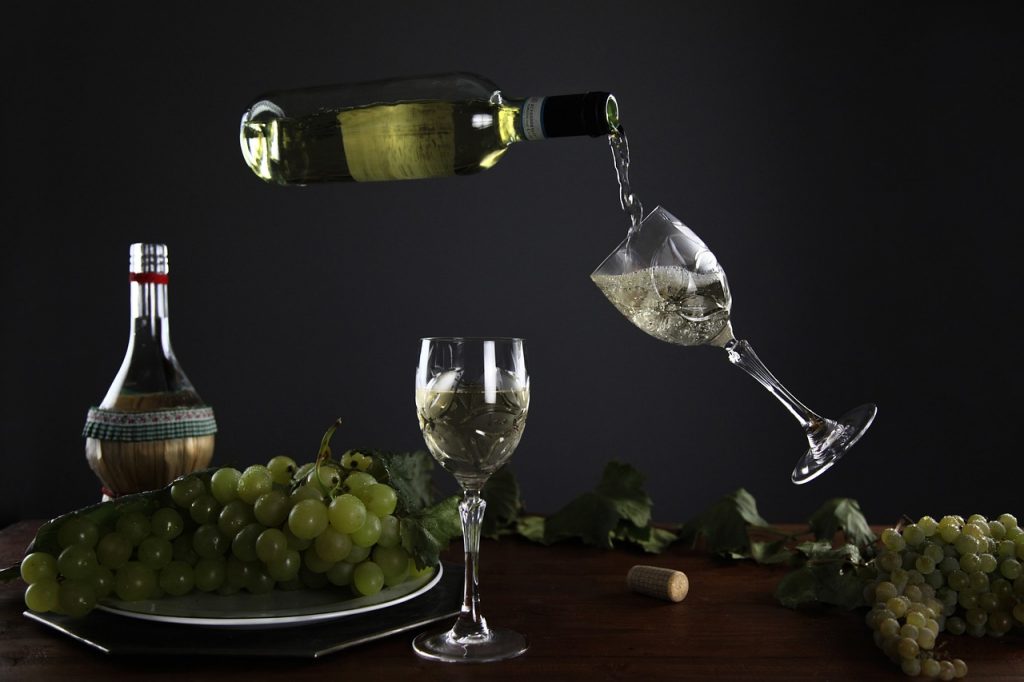
Characteristics of white wine
White wines are as the name suggests light in color. The color can vary from almost translucent to golden tones.
The way in which white wines are produced is also important. First of all, the skin of white wine grapes is removed before pressing, which ensures that the color is light, while at the same time ensuring that the wine is free of tannins. For white wine red and white grapes can be used.
White wines usually have less alcohol than red wines.
Because white wines are fermented at lower temperatures, they retain their fruit flavors, but they can also embody more robust tones that are otherwise typical for red wines.
The main characteristic of white wine is its acidity, which ensures freshness. But another important part is also the sweetness of the wine. This is the part when we talk about dry, semi-sweet, or sweet wines.
Typically, young wines will have a light body, which means less sugar and more acidity. Whereas full body wines have more alcohol and sugar but are less acidic.
Food pairings
Traditionally, white wines pair better with lighter dishes. Thus, light bodied white wine such as Riesling wine is recommended for lighter dishes, like fish.
More hearty dishes, however, can be paired with medium to full bodied wine such as Viognier. Full bodied white wine tends to have a wider range of aromas.
White wine also goes well with cheese as it is not bitter. Dry wine is recommended for fattier cheeses and semi-sweet wines for soft cheeses.
Popular white wines
- Chardonnay
- Sauvignon Blanc
- Pinot Grigio or Pinot Gris
- Riesling
- Moscato
Rosé wines
Rosé is its own type of wine, although at first glance it looks like a mix of red and white. This is also one possible way of making rosé, but not a typical one. Rosé is usually made from red grapes, but they shorten the time the skin of the grape is in contact with the juice, hence the pink color. It is one of the most adaptable wines in terms of paring, as rosés go well with practically any dish.
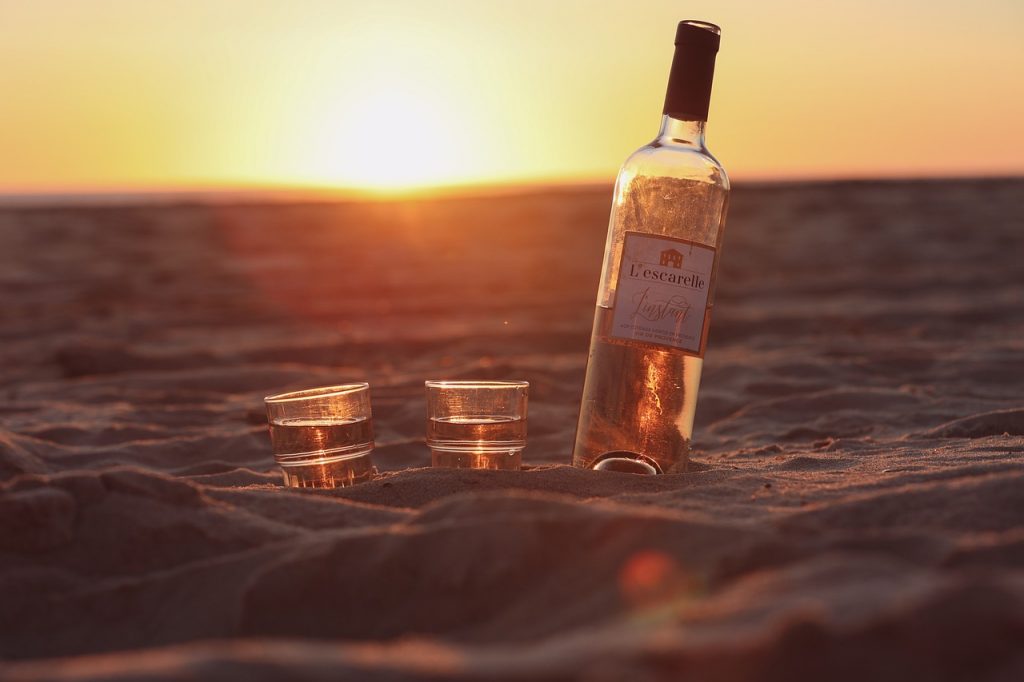
Characteristics of rose wine
Rosé is characterized by the pink color that ranges from a light translucent pink to a true pink.
The color is obtained by the grape juice coming into contact with the skin of the red grapes. The hue of pink depends on the total time grape skin and grape juice are in contact during fermentation, it can be a few hours or days. One of the less common ways of making rosé is to blend red and white wine.
Rosés are usually blended wines made from different grape varietals.
Flavors range from fresh to fruity, they can be sweet, although they are usually drier. Rosé wine is usually a medium bodied wine.
Food pairings
Rosé is a grateful wine to pair with food, as it goes well with almost any dish. From spicy dishes and salads to different types of meat. It has also become a staple wine for picnics.
For example, lighter, drier rosés are best paired with rice dishes, seafood, and pasta. Rosés with more body go well with roasts, grilled meats, or cold cuts. Fruitier rosés pair well with soft cheeses.
Popular rose wines
- Syrah Rosé
- Cabernet Sauvignon Rosé
- Provence Rosé
- Pinot Noir Rosé
- Sangiovese Rosé
Sparkling wines
Sparkling wine is a must at any celebration. If in the early days of vinification winemakers were careful not to carbonate the wine, that has changed since. There are even different methods of getting bubbles into a bottle of wine.
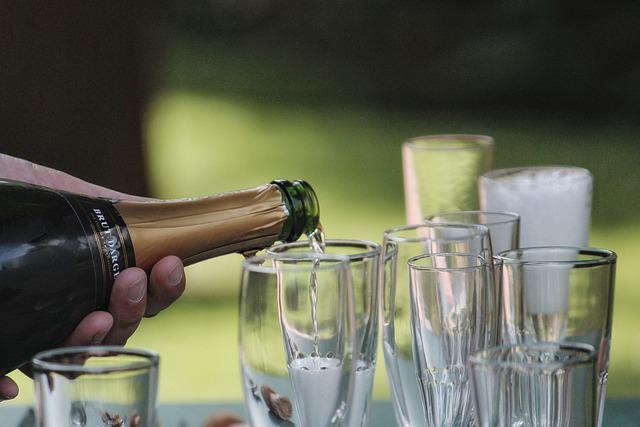
What is sparkling wine
Sparkling wines are a carbonated type of wine. Even though most sparkling wines are made from white wine, there are also versions made with rosé or red wine.
It can be produced anywhere in the world, but there are certain wines that are restricted to a wine region, this goes for the famous Champagne which is only produced in the French champagne region. Normally, bubbly wine is produced from grapes native to the region.
The most common production methods are the traditional method and the Charmat or tank method. Wines are carbonized in the second fermentation, while other wines only go through the first fermentation. In short, the wine in the traditional method is carbonized in the bottle, whereas in the Charmant method it is carbonized in a larger pressurized tank and then bottled. Then there is also the less common possibility of adding carbon dioxide to the wine.
An important characteristic of sparkling wine is the sugar content, which is why they vary from brut to sweet.
Food pairings
As with other varieties of wine, food pairings in sparkling wines should be made according to the taste of the wine, as not all sparkling wines are the same.
Light bodied and fresher sparkling wines are a good choice for seafood, fish, and snacks. Full-bodied sparkling wines are recommended with cheese, while sparkling rosé, with its floral aromas, go well with charcuterie.
Popular sparkling wines
- Champagne
- Prosecco
- Asti
- Cava
- Crémant de Loire
Dessert wines
Dessert wine is, as the name suggests, sweet wine that is usually served at the end of dinner, most often with dessert. Although they have got a bit of a bad rap in recent years because of the amount of residual sugar that is left after fermentation, this is not justified.
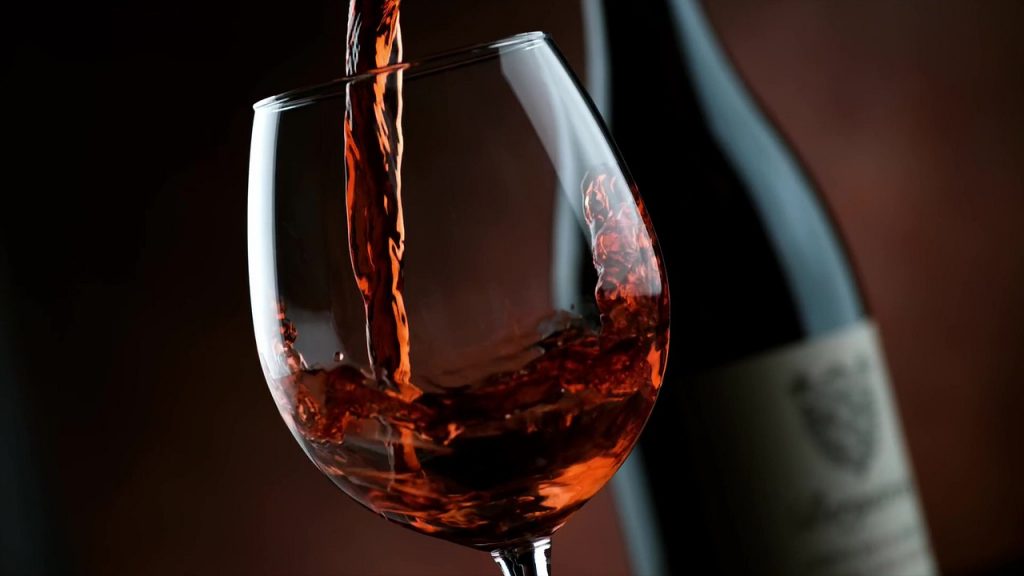
What are dessert wines
Dessert wines usually have a higher sugar and alcohol content. This category is not as clear as other wine types, as various fortified, red and sparkling wines fall into this category. They are made from white grapes and red grapes. In principle, dessert wines are made by stopping fermentation early and not allowing all the sugar to turn into alcohol.
There are also several ways of making dessert wines. One option is to harvest late, as this is when the grapes are riper and sweeter, it is possible to even wait until the first frost. Another option is to add spirits, which increases the alcohol level and stops fermentation. Alternatively, it is possible to use noble rot, where a specific type of fungus attacks the ripe grapes, making them sweet.
Food pairings
The basic rule is to choose a dessert wine that is sweeter than the dish – dessert, fruit, or cheese – as this enhances the flavor of the wine. The best combinations for our taste buds are therefore those of not too sweet desserts such as nut pies with a slightly sweet wine.
They can also be offered as an aperitif and with savory dishes, thanks to the variety of styles. There are some tried and tested combinations such as port and blue cheese.
Popular dessert wines
- Port
- Moscato
- Madeira
- Ice Wines or Eiswein
- Sherry
Fortified wines
Fortified wines are basically wines to which distilled spirit has been added. This was primarily done to prolong the shelf-life, so the wine did not turn vinegary on longer journeys across the sea. Both dry and sweet fortified wines are available and are usually offered before or after meals.
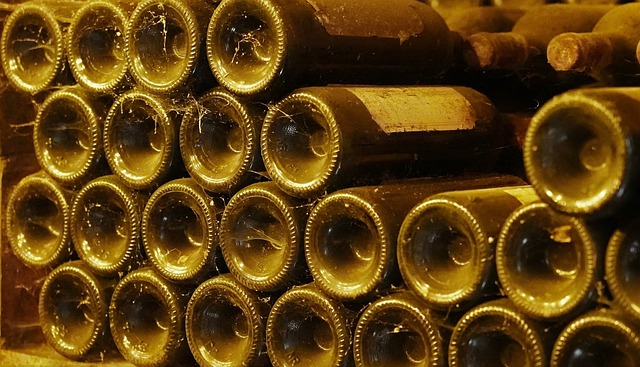
What are fortified wines
Fortified wines are wines to which spirit has been added during or after fermentation to increase the alcohol level of the wine, which ranges between 17 and 20 percent. The definition may seem easy, but a wide range of fortified wines vary considerably from one another.
In principle, there are certain rules to fortified wine, such as a minimum aging time, the type of base wine, what spirit is added, and the permitted alcohol by volume (ABV). They can be produced anywhere in the world, but some are regionally specific, such as Madeira, which comes from the Portuguese island of the same name.
How dry or sweet the wine is will depend also on when the spirit is added – before, during, or after fermentation. If it is added after fermentation, the wine will be dry, as all the sugar has been converted into alcohol during the fermentation process, whereas if spirit is added during fermentation, this stops the process and leaves the wine sweeter.
Although many fortified wines are also dessert wines, not every dessert wine is necessarily a fortified wine, and vice versa.
Food pairings
Fortified wines are most often offered as an aperitif or as a dessert wine, but a lot depends on the type of wine itself. For example, it is advisable to choose a wine that is sweeter than the dessert.
Fortified wines are not just for drinking. They can be added to soups at the end of cooking, as well as to sauces and stews to enhance the flavor.
Popular fortified wines
- Sherry
- Port
- Marsala
- Commandaria
- Vermouth
Orange wines
Orange wines are the ‘fourth’ color of wine. They are created when white wine is made using the red wine method. This means leaving the grape skins and seeds in contact with the juice of the white grapes. Many people are surprised by the robust and intense flavor.
This type of wine was known thousands of years ago in Georgia, but the production method died and was revived in Italy in the middle of the last century. It was popularized in Slovenia and Italy about 20 years ago. This is when this type of wine was given its name, whereas in Georgia it is called amber wine.

What are orange wines
Orange wines are a special variety of white wine made from white grapes, created when the grape skins and seeds are left in contact with the juice during fermentation. It is a special type of production in which practically nothing is added, sometimes not even yeast, as fermentation takes place spontaneously.
The maceration adds pigments and tannins to the wine, which are released from the skin of the grape, and that affects the wine’s taste. The color then varies from gold to amber. The flavor has a wide range since there is bitterness because of the tannins, but they are also fresh with citrus notes and herbal notes. Some taste like lighter red wines or fruit beers. As a rule of thumb, the longer the skin has been in contact with the juice, the fuller the wine will taste.
Food pairings
Orange wine is generally a good match for dishes that also pair well with red wine. It is considered a bold wine in taste and is therefore recommended for more bold dishes such as curries, Moroccan cuisine, Ethiopian cuisine, Korean cuisine, and Japanese cuisine.
It also goes well with meat and fish dishes.
Popular orange wines
- Orange Pinot Grigio
- Orange Sauvignon Blanc
- Orange Riesling
Now you know the most popular types of wine. Wan to kno what are the top wine producing countries in the world? Read our article on the linl.
